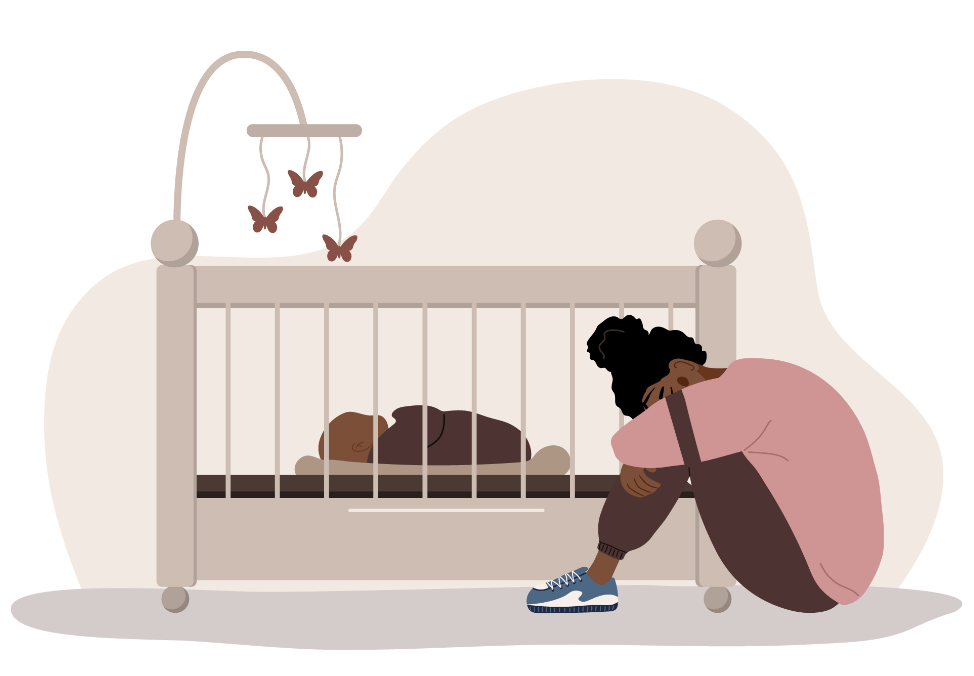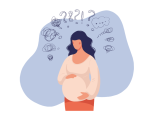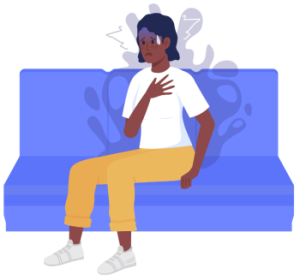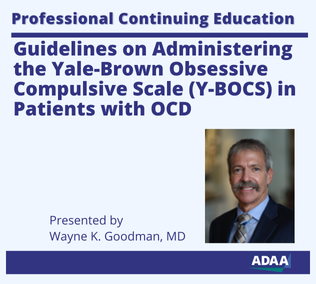Tips to Combat the "What If's" of OCD During Pregnancy and After Birth
Tips to Combat the "What If's" of OCD During Pregnancy and After Birth

Is my OCD going to get worse during pregnancy or after giving birth? The worry that OCD symptoms may be exacerbated during reproductive events is common among individuals trying to become pregnant, currently pregnant, or after delivering a baby, and it’s a question that I often get asked in my practice.
The concern echoes the characteristics of the perinatal/postpartum period as one of the most vulnerable times during one’s lifespan. The term postpartum generally refers to symptoms following childbirth, whereas perinatal may refer to symptoms during pregnancy, or encompassing both the pregnancy and postpartum periods.
The perinatal time is unique as it impacts the person on multiple levels. It is a combination or a “storm” of external (e.g. poor sleep), internal (e.g. increased sense of responsibility) and physiological stressors (e.g. hormonal and physical changes).
During this period, some of the soon-to-be-parents and new parents experience intrusive, unwanted, and distressing worries related to the safety and wellbeing of their baby. OCD symptoms can occur within a few days to 3-6 months after delivery. Of note, due to the psychosocial changes, OCD can impact both partners including the non-birthing parent. Research studies suggest that there is an increased risk for onset of OCD following childbirth. In some studies, 1.7-4.0% of women experienced their first onset of OCD after childbirth. For those with a past diagnosis of OCD, there is an increased rate for symptoms to return during postpartum.
Some common obsessions during this time can include:
- any type of harm to the baby that is accidental or intentional (e.g. worries about drowning, intrusive images of the baby dead)
- contamination concerns including worries about germs (e.g. worries that baby will get sick) or worries about exposure to environmental contaminants
- taboo thoughts including sexual or violent images
In response to these worries and intrusive thoughts, some associated compulsions can include:
- excessively checking the baby (e.g. repeatedly checking vital signs like breathing, or in utero checking heartbeat)
- washing or cleaning (e.g. sanitizing everything that is touched);
- neutralizing thoughts by saying a special word, or by replacing with a positive image
- asking others for reassurance that the baby is okay
In addition to these behaviors, some may avoid being around the baby in certain situations due to fears of having intrusive thoughts, which might further impact the ability to bond with the infant.
For those with a prior history of having OCD, the symptoms may be consistent with previously experienced themes.
- For example, it may be that someone with contamination concerns (e.g. fear of getting sick) now has concerns related to the baby’s health and cleanliness.
- In other ways, it can be the classic “whack-a-mole” OCD pattern where the themes of OCD can change over time.
- For example, someone with contamination concern might now experience intrusive taboo images.
As those suffering with OCD may already know, OCD can be sneaky. It might feel that these concerns are “real” and not irrational. OCD also increases the stakes by putting the new baby at the center of the obsession or fear. This may make it more difficult to tolerate uncertainty, related to some of the fears, which is at the core of OCD.
For example, a person with worries about getting sick may be more willing to touch a potentially contaminated surface and confront the possibility of getting sick, whereas they may not be as willing to do the same if there is a risk of getting their child sick.
Without treatment, as with any OCD presentation, the symptoms are unlikely to go away on their own. The more hopeful message though is that exposure and response prevention (ERP), the gold standard cognitive behavioral treatment for OCD, works very well both for first onset of OCD and for exacerbation of symptoms during the perinatal period. One of the advantages of being in ERP prior to pregnancy or postpartum is the ability to be more aware of potential symptoms and catching the OCD symptoms earlier during this period.
Planning to have a baby and having a baby is incredibly taxing on many levels. There are so many “what ifs.” Having support and resources prior to delivery is often beneficial for the new parents-to-be.
With proper support and access to evidence-based treatment, many individuals can navigate this life event in a fulfilling way, by being able to put their worries/fears aside and reconnecting to the present (specifically the baby and the transition to the new role as a parent). The treatment for OCD helps most people reduce the attachment to the “what if” thoughts and instead increase mindfulness around “what is.”
This post is presented in collaboration with ADAA's OCD and Related Disorders SIG. Learn more about the SIG.




















